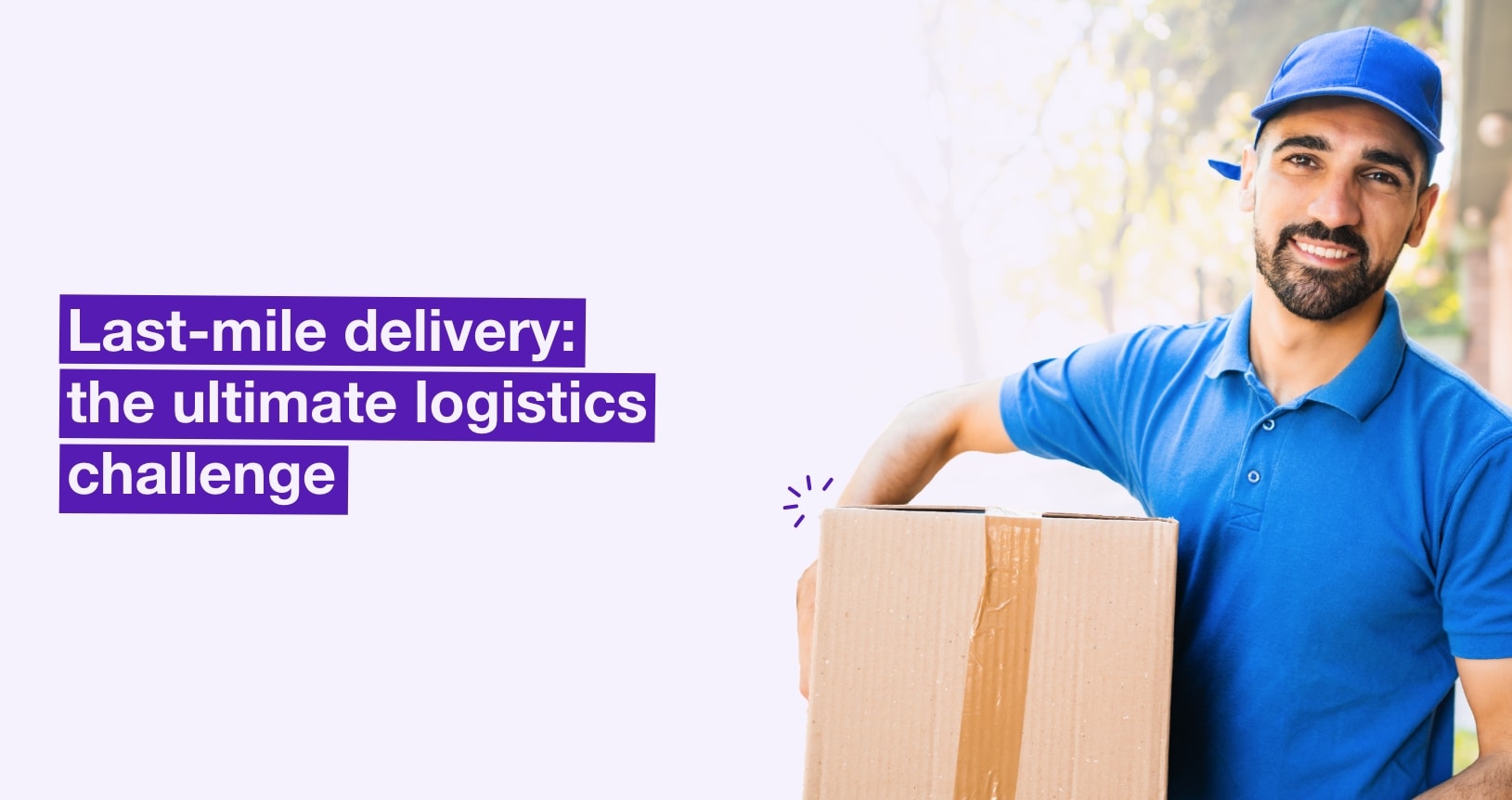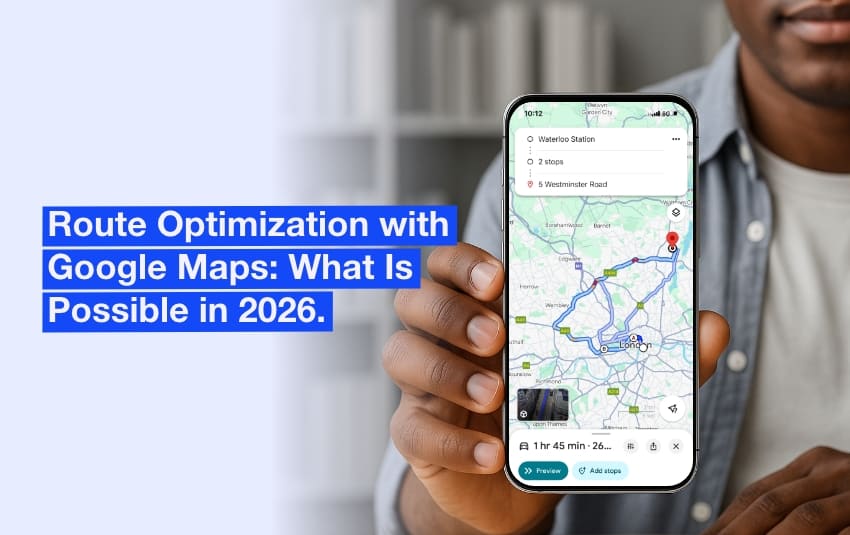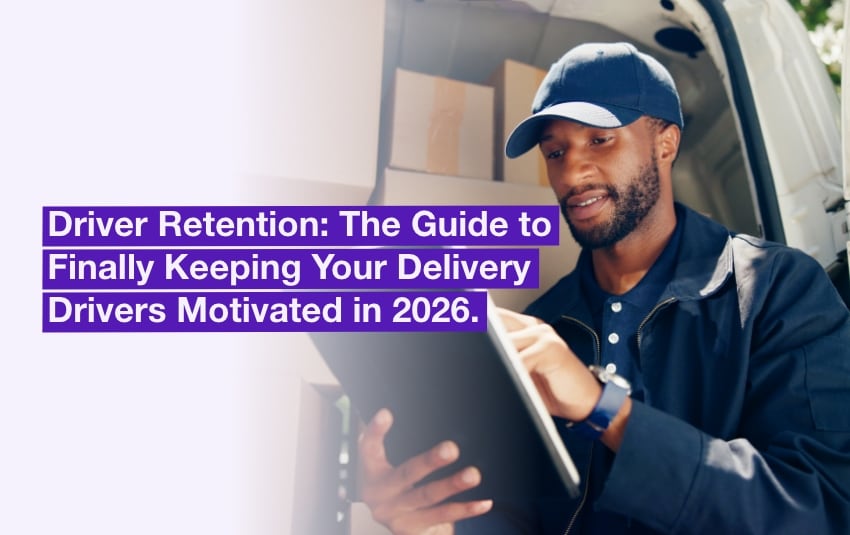Last-mile delivery: the ultimate logistics challenge

Boosted by the rise of e-commerce and our changing lifestyles, last-mile delivery continues to gain ground.
But this service, which is so popular with consumers, is increasingly expensive for companies, cities, and the environment.
How can we meet ever-increasing customer expectations without compromising profitability or the environment? AntsRoute takes a look at these key issues, and at the main solutions being tried out by professionals.
Table of contents
- What is the “last mile”?
- The 3 major challenges of last-mile logistics
- 5 realistic solutions to optimise your last-mile deliveries
Last-mile delivery is a critical challenge for today’s urban logistics. For transport and courier companies, the use of innovative software is a guarantee of meeting consumer expectations while reducing environmental impact.
What is the “last mile”?
The last mile is the final link in the supply chain, connecting the last store or warehouse to the final consignee.
In practice, the last mile is often much longer than 1,000 meters, especially when the end customer lives in a rural area.
Last-mile delivery has been a fast-growing sector since the 2000s, driven by several factors:
- The e-commerce boom. The increase in online shopping has led to a rise in the number of parcels, estimated at 35% per year.
- The changing business practices. More and more companies are offering home delivery, including local retailers.
- Customers who want to receive their packages ever faster, to the point of requiring deliveries in less than 2 hours. Some economists even speak of the “Quick Commerce”.
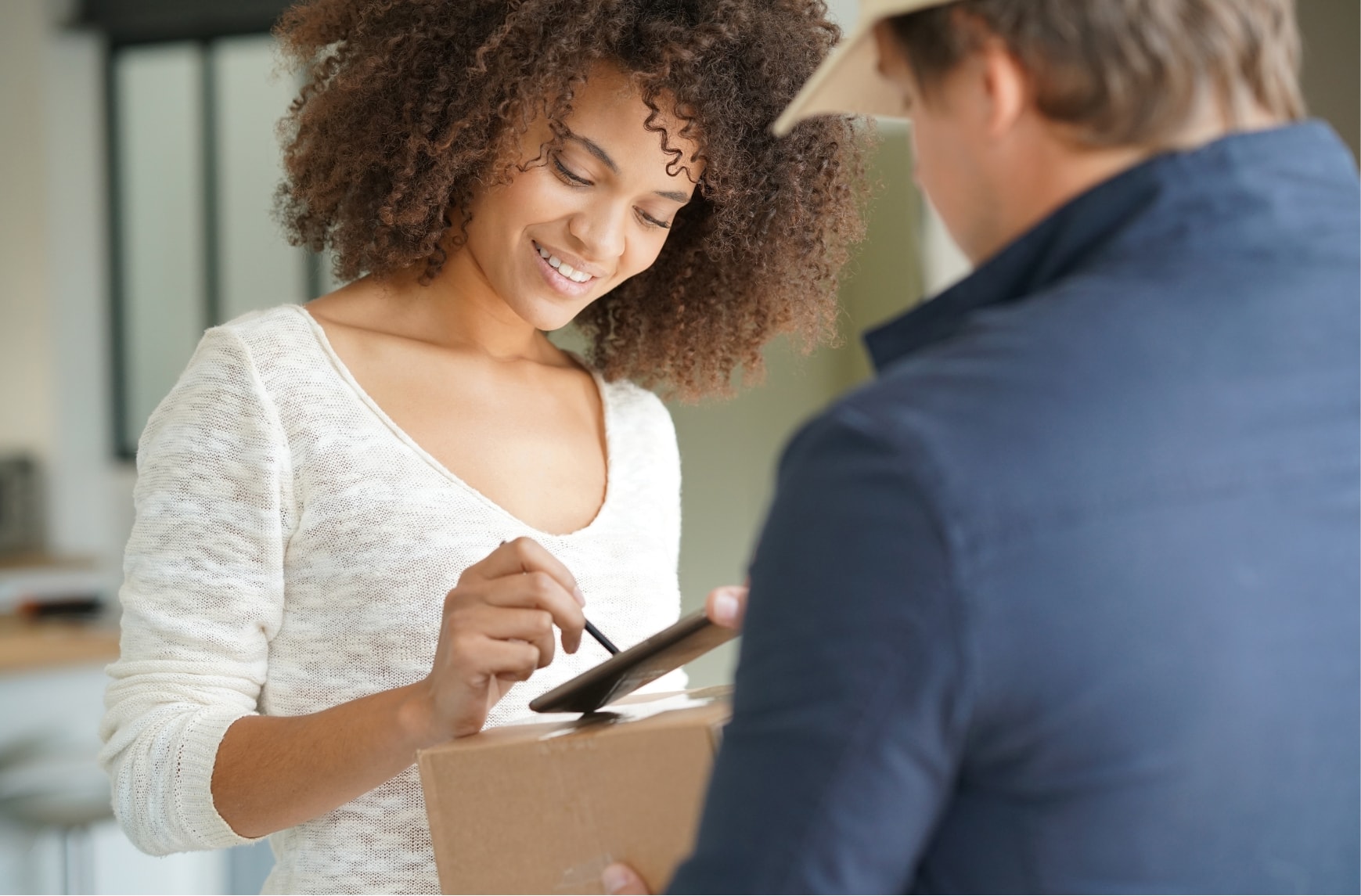
Last-mile delivery is growing.
The 3 major challenges of last-mile logistics
Maintain and improve profitability
The closer you get to the consumer, the more complicated it is to pool flows, and the higher the unit cost of transporting each item. There are several reasons for this inflation of last-mile costs:
- Delivery deadlines.
- Geographical dispersion of customers.
- High cost of logistics land in urban areas.
- Difficulties of access and parking reduce the productivity of delivery drivers, etc.
While the economic cost of the last mile usually represents 41% of total supply chain costs in 2023, this ratio is set to rise to 56% in the coming years.
Yet companies and online retailers rarely charge their customers the real cost of the last mile. Instead, to keep product delivery costs under control, they tend to outsource this part of the supply chain, while forcing logistics providers to compete fiercely on price.
For those involved in last-mile delivery, this strong pricing pressure means very low profitability. According to a study conducted in France by the firm Oliver Wyman, courier and express freight companies, like their subcontractors, have to work with an operating profit of around 2%.
At this margin level, every player in the supply chain must constantly streamline and optimise their costs, if they want to save their business year after year!

The market of local delivery SMEs in France by Oliver Wyman.
Reduce the carbon footprint of transport
The environmental impact of goods deliveries is considerable, particularly in urban areas.
The Centre for London estimates that 450 million packages are delivered in London every year, i.e. 1 package a week for every inhabitant. Yet 85% of freight in the UK is delivered by road, generating massive pollution.
According to the study “Worth the Weight: Making London’s deliveries greener and smarter” carried out by Centre for London, goods transport in the city accounts for :
- 15% of traffic.
- 25% of carbon emissions.
- 27% of fine particle emissions.
To avoid suffocating, cities are deploying new logistics strategies. In addition to regulatory measures such as low-emission zones, they are also encouraging hauliers to make their vehicle fleets carbon-free by offering financial incentives.
Freight companies, caught between traffic restrictions and the environmental concerns of their customers, have no choice but to gradually change their practices.

The impact of goods deliveries in London.
Meet customer expectations and build loyalty
To reduce their carbon footprint and preserve their low margins, logistics professionals may be tempted to extend delivery deadlines.
But it’s a risky gamble, because consumers’ expectations are so contradictory.
According to a study conducted in 2021 by IFOP, an international polling and market research firm, delivery remains the most important factor when buying online for 64% of customers, far ahead of price (31%) and the product itself (27%).
But it’s when it comes to defining what is “good” delivery that things get tricky…
Consumers clearly appreciate on-time delivery and respect for commitments on the date and time slot indicated. But what else? 73% of Internet users say they are interested in eco-responsible delivery, and 80% even say they are willing to be delivered more slowly.
Yet more than half of consumers would like to receive their parcel within the hour of ordering, or even in the evening and on Sundays. But these two options are far from the best in terms of social and environmental responsibility!
To meet these highly contradictory requirements, carriers and online retailers have to offer a very wide range of delivery options, with customers making their choices on a case-by-case basis.

The most important criteria when buying online by IFOP.
5 realistic solutions to optimise your last-mile deliveries
To improve your profitability and gain market share in this ultra-competitive environment, your company can fortunately benefit from a number of tried and tested services and best practices.
Pooling flows
The Transport for London reports an average loading factor for vans in London of approximately 38%.
Depending on the location and activity of your company, there are several solutions for pooling shipments and reducing the number of miles travelled.
For example, you can delegate some routes or optimise the use of your own lorries by using the freight exchange.
If you are based in a rural area or a small town, you can also outsource deliveries to low-emission zones to companies which specialise in urban logistics.
These companies operate cross-docking, i.e. they receive goods at sorting platforms on the outskirts of major cities, before delivering them within the town centres using a fleet of adapted vehicles:
- Light commercial vehicles
- Scooters
- Cargo bikes, etc.
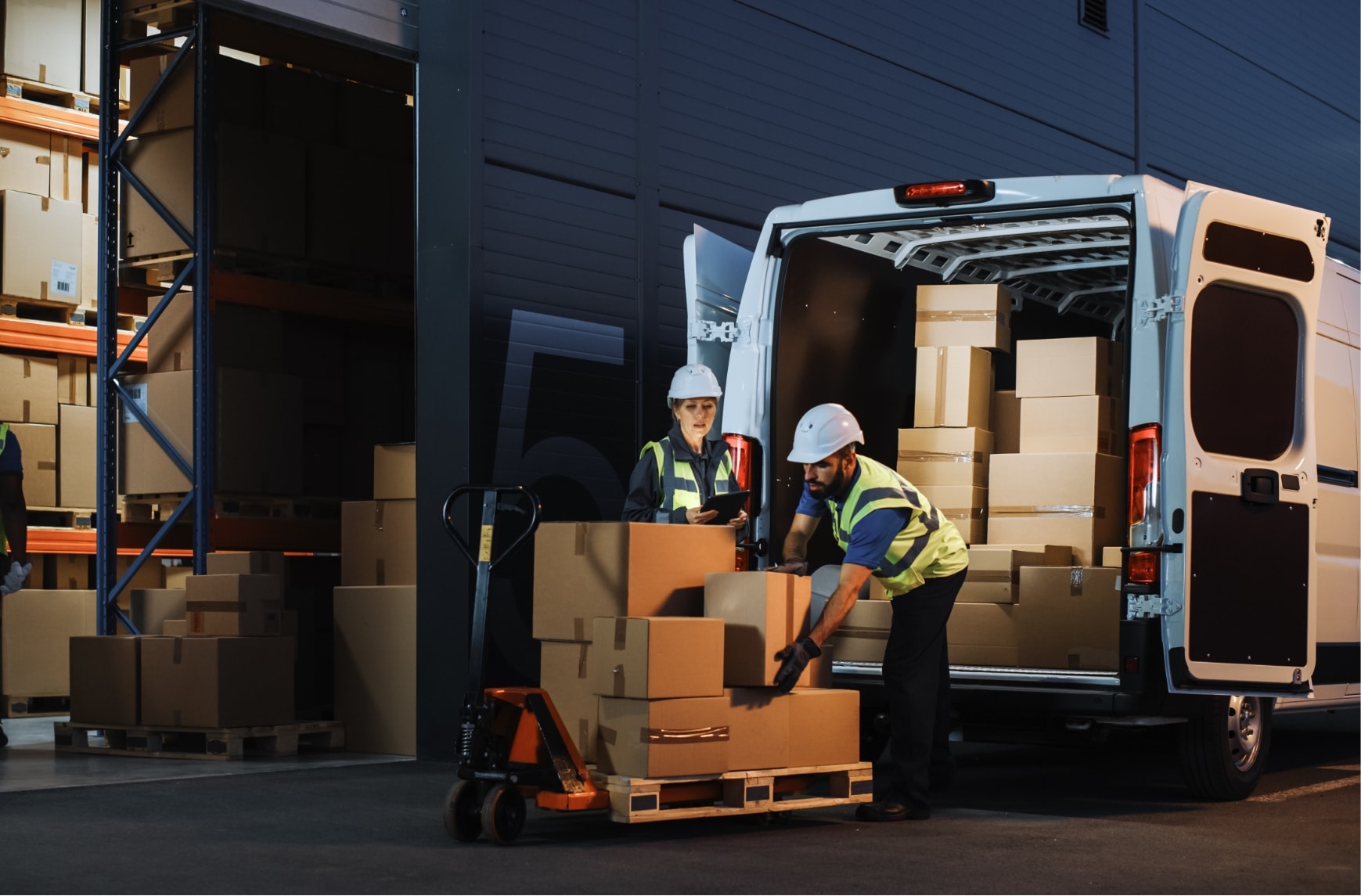
The pooling of flows thanks to sorting platforms on the outskirts of major cities.
Optimising delivery routes with dedicated software
Another very quick solution is to use dedicated optimisation software to manage more efficiently the deliveries that you cannot or do not want to outsource.
AntsRoute is packed with useful features to help you streamline your distribution routes:
- Planning in just a few clicks thanks to powerful algorithms.
- Generating routes tailored to each category of vehicle.
- Optimising the loading capacities.
- Simplifying the management of unforeseen events (absences, breakdowns, traffic jams, etc.).
- Tracking in real-time the deliveries completed or cancelled, etc.
Encouraging out-of-home delivery
According to the same IFOP study, almost half of customers said they would prefer a delivery address other than their home or workplace:
- 29% choose parcel pickup-up point.
- 9% prefer delivery to a locker (Amazon lockers, InPost Lockers, Pickup Station, etc.).
- 5% choose in-store pick-up.
- 4% at a post office.
However, out-of-home delivery is a very effective way of optimising deliveries. Not only do you avoid the 13% to 14% failure rate at the first delivery attempt, but you also reduce the number of stops in town, which are a major source of pollution.
It is estimated, for example, that a delivery driver serving drop-off points makes an average of 15 stops during a delivery route, compared with around 50 when serving private customers.
It is therefore in the interests of both e-commerce retailers and logistics service providers to encourage the pick-up of parcels outside the home by offering either more attractive prices or express delivery times for this type of delivery.
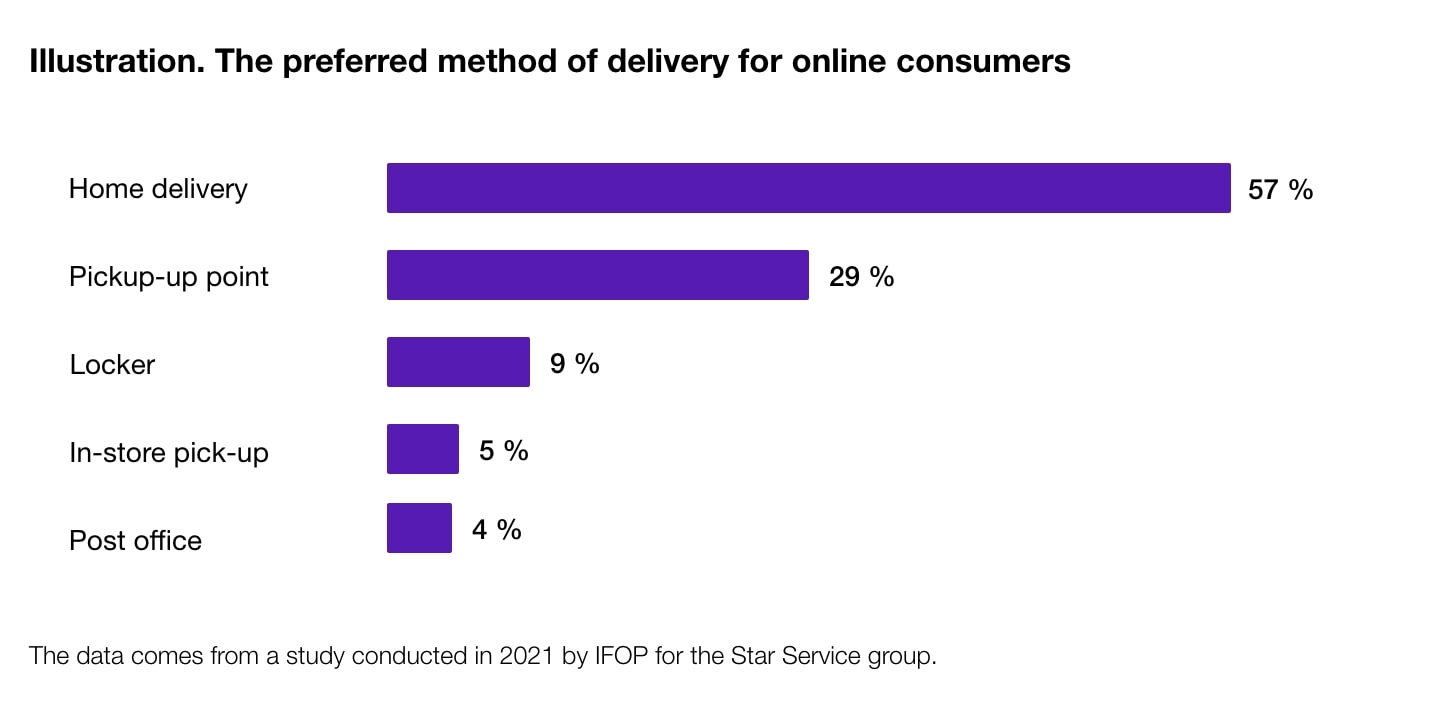
The preferred method of delivery for online consumers by IFOP.
Turning home delivery into a great experience
Route management software is also essential for optimising deliveries to the 57% of consumers who still choose home or office delivery.
To avoid failures due to customer absence, these solutions include functions for the automated sending of emails or text messages, according to the timetable defined by the company.
✨ Our software also includes enhanced features to make delivery a memorable experience and offer your customers a 5-star service.
With AntsRoute, for example, your customer can choose a delivery time slot online, 24 hours a day, 7 days a week. They also receive a live tracking link so that they can see the location of the delivery driver in real time.
Reducing the carbon footprint of your delivery fleet
To limit the environmental impact of deliveries while avoiding the constraints of low-emission zones, the best solution is of course to switch your fleet to electric, biogas or natural gas vehicles.
Many cities and urban communities have introduced dedicated subsidies to reduce the cost difference between combustion vehicles and these more environmentally-friendly modes of transport. Think about asking your local authority about this.
To help you build greener delivery routes, AntsRoute also includes a range of features designed to ease the real constraints of using electric vehicles.
During the planning stage, our software takes into account parameters such as:
- The battery life of each vehicle and the time required to recharge it.
- Minimum and maximum state of charge thresholds.
- The location of the stations.
- The state of charge of the battery transmitted by a tracking tool, etc.
Would you like to try our route management solution for free for 7 days? It’s easy, just register here!
Free 7-day trial | No credit card required
Contenu
- What is the “last mile”?
- The 3 major challenges of last-mile logistics
- Maintain and improve profitability
- Reduce the carbon footprint of transport
- Meet customer expectations and build loyalty
- 5 realistic solutions to optimise your last-mile deliveries
- Pooling flows
- Optimising delivery routes with dedicated software
- Encouraging out-of-home delivery
- Turning home delivery into a great experience
- Reducing the carbon footprint of your delivery fleet


